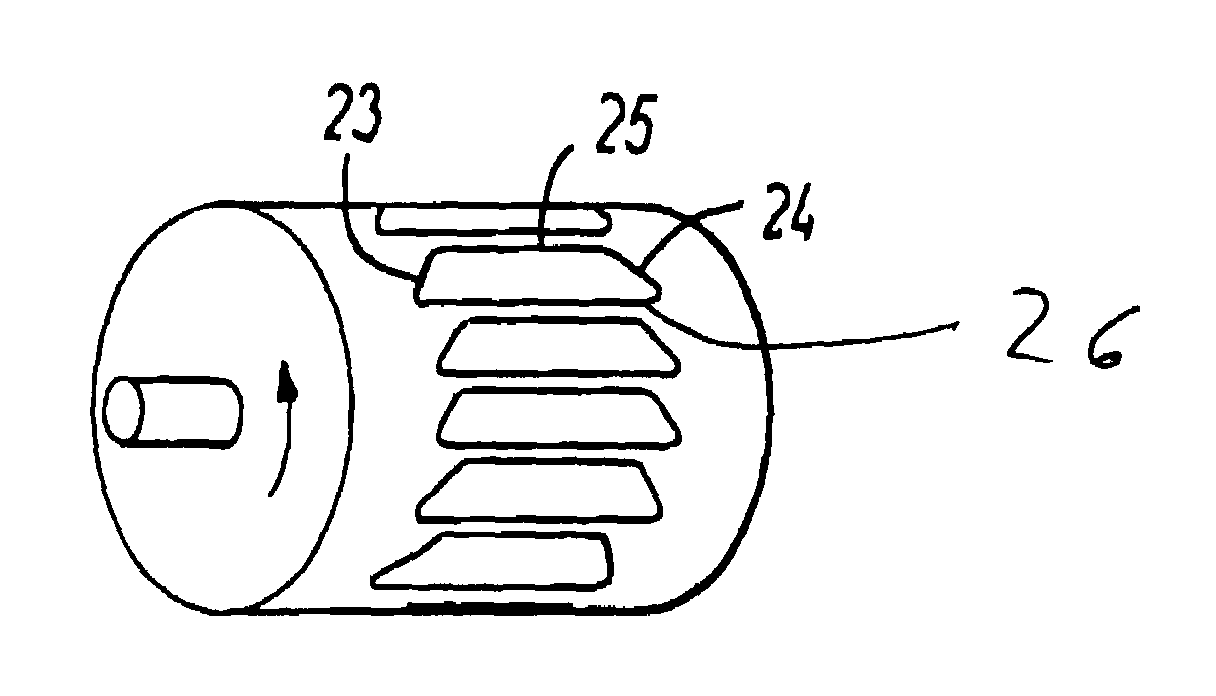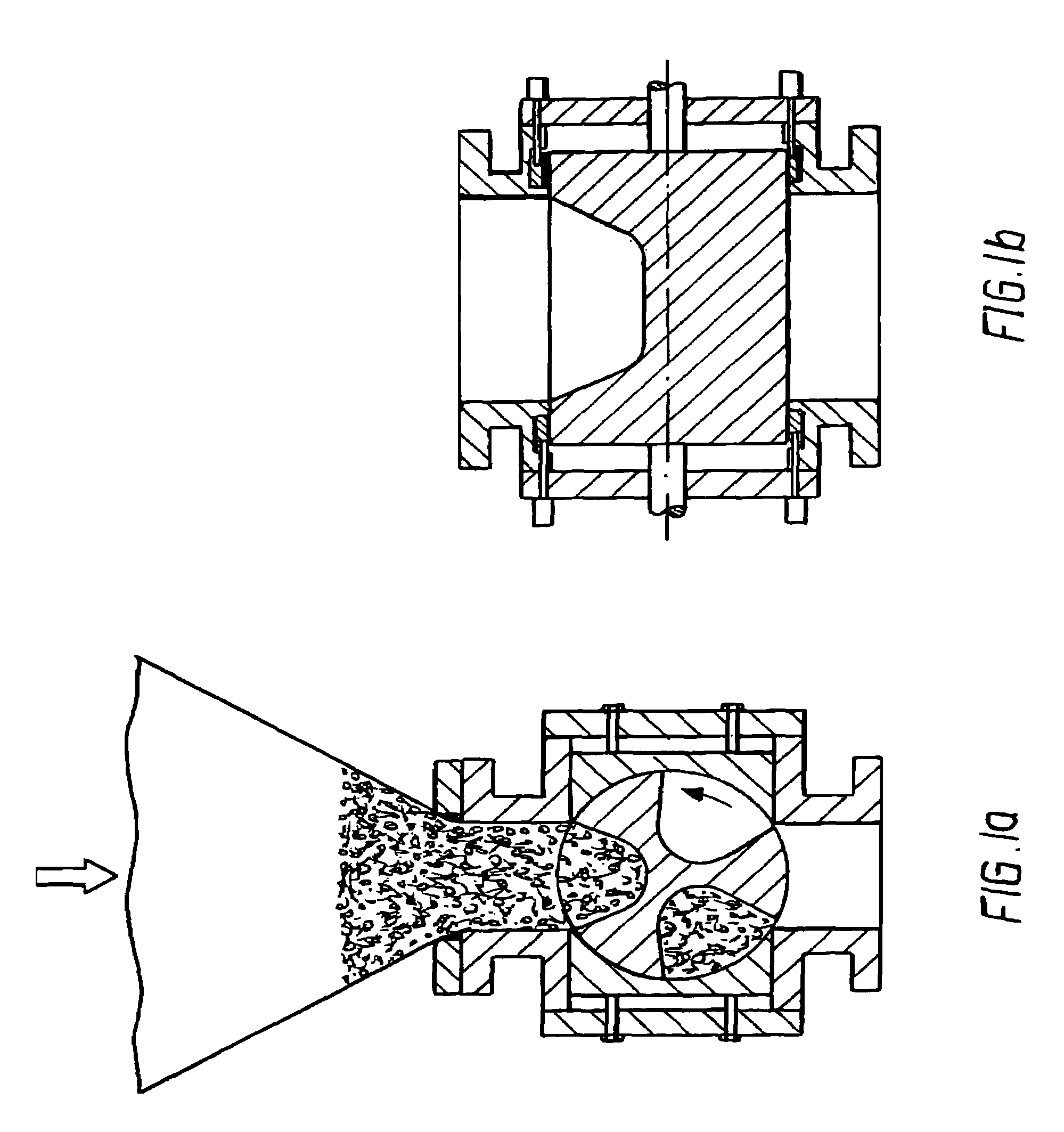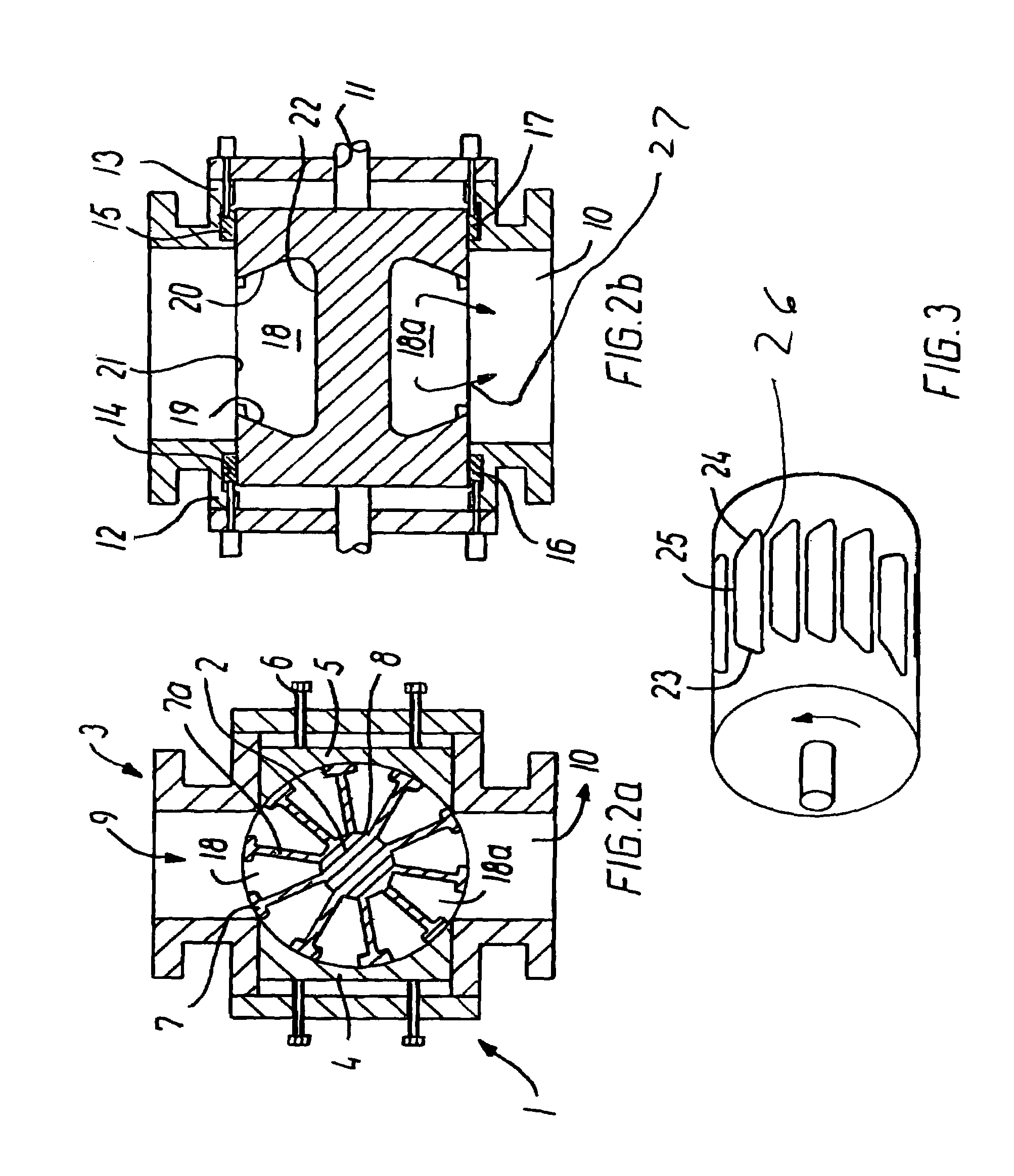Rotary airlock valve
a technology of airlock valve and sealing surface, which is applied in the direction of measuring device, loading/unloading, instruments, etc., can solve the problems of gas leakage outside the housing, wear and tear of the sealing surface of the rotary airlock valve, etc., to reduce the wear effect of the housing wall and associated seal, the effect of reducing the quantity of captured steam
- Summary
- Abstract
- Description
- Claims
- Application Information
AI Technical Summary
Benefits of technology
Problems solved by technology
Method used
Image
Examples
Embodiment Construction
[0021]Referring to FIG. 2a, a rotary airlock valve 1 has a rotor 2 disposed in a housing 3 having a pair of movable cylindrical sealing walls 4 and 5. These are adjusted by screws 6 to assure a positive seal with vanes 7 that extend from a hub 8 of the rotor. The housing has an inlet opening 9 and an outlet opening 10. Referring to FIG. 2b, the rotor is mounted to a shaft 11, driven for rotation by a motor (not shown). The housing has a side sections 12 and 13, each having a circumference groove 14 and 15 that receive a sealing material or gasket 16 and 17 therein. The sealing material may be a gasket, a compressible packing, or any other conventional seal commonly used to seal such rotating parts.
[0022]In FIG. 2b, a material receiving pocket 18 is shown adjacent the inlet opening for receiving a solid material therein. The pocket shape is defined by the adjacent vanes, 7 and 7a, and has converging side walls 19 and 20 such that the pocket opening 21 is of smaller cross-section than...
PUM
 Login to View More
Login to View More Abstract
Description
Claims
Application Information
 Login to View More
Login to View More - R&D
- Intellectual Property
- Life Sciences
- Materials
- Tech Scout
- Unparalleled Data Quality
- Higher Quality Content
- 60% Fewer Hallucinations
Browse by: Latest US Patents, China's latest patents, Technical Efficacy Thesaurus, Application Domain, Technology Topic, Popular Technical Reports.
© 2025 PatSnap. All rights reserved.Legal|Privacy policy|Modern Slavery Act Transparency Statement|Sitemap|About US| Contact US: help@patsnap.com



